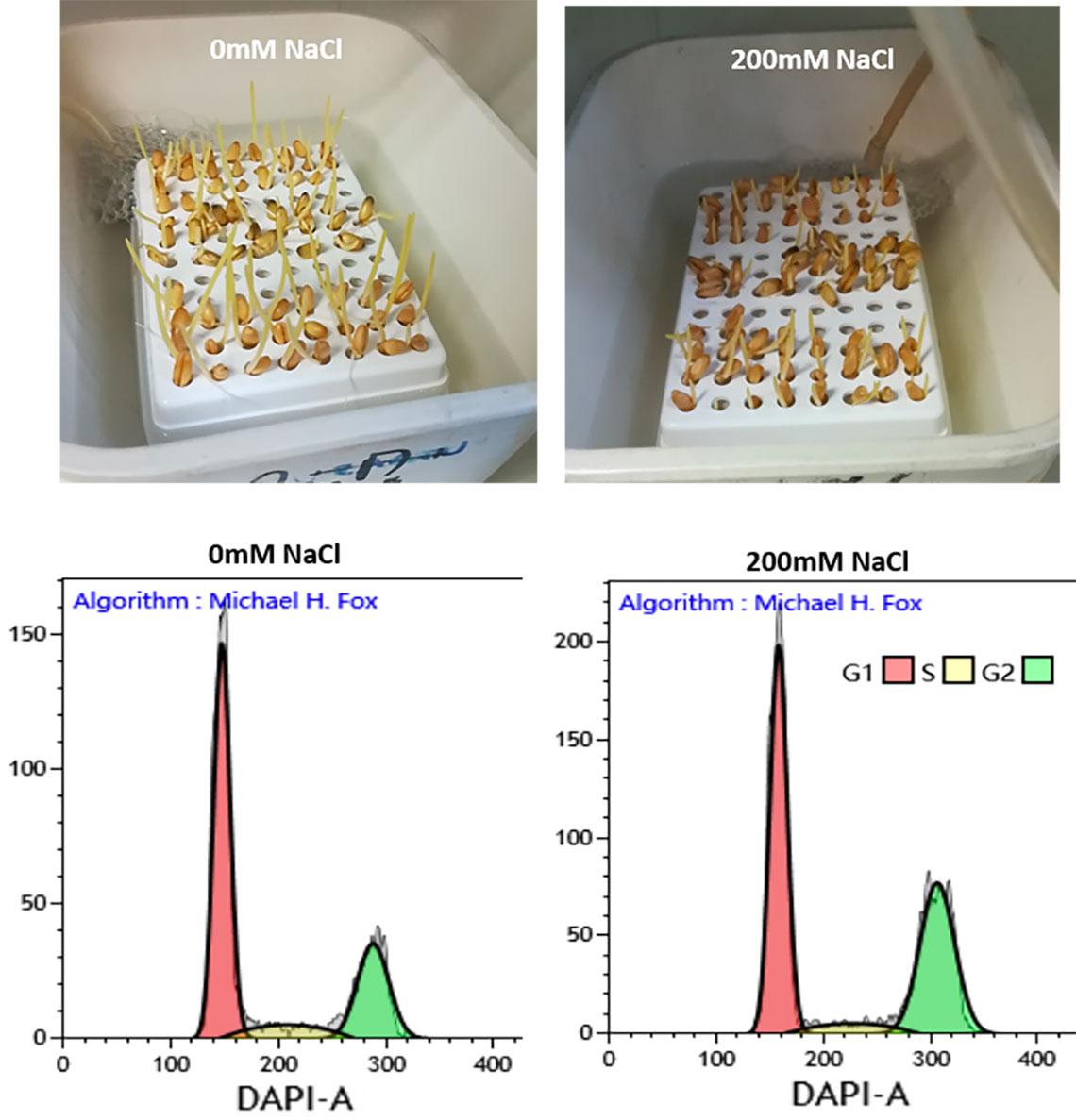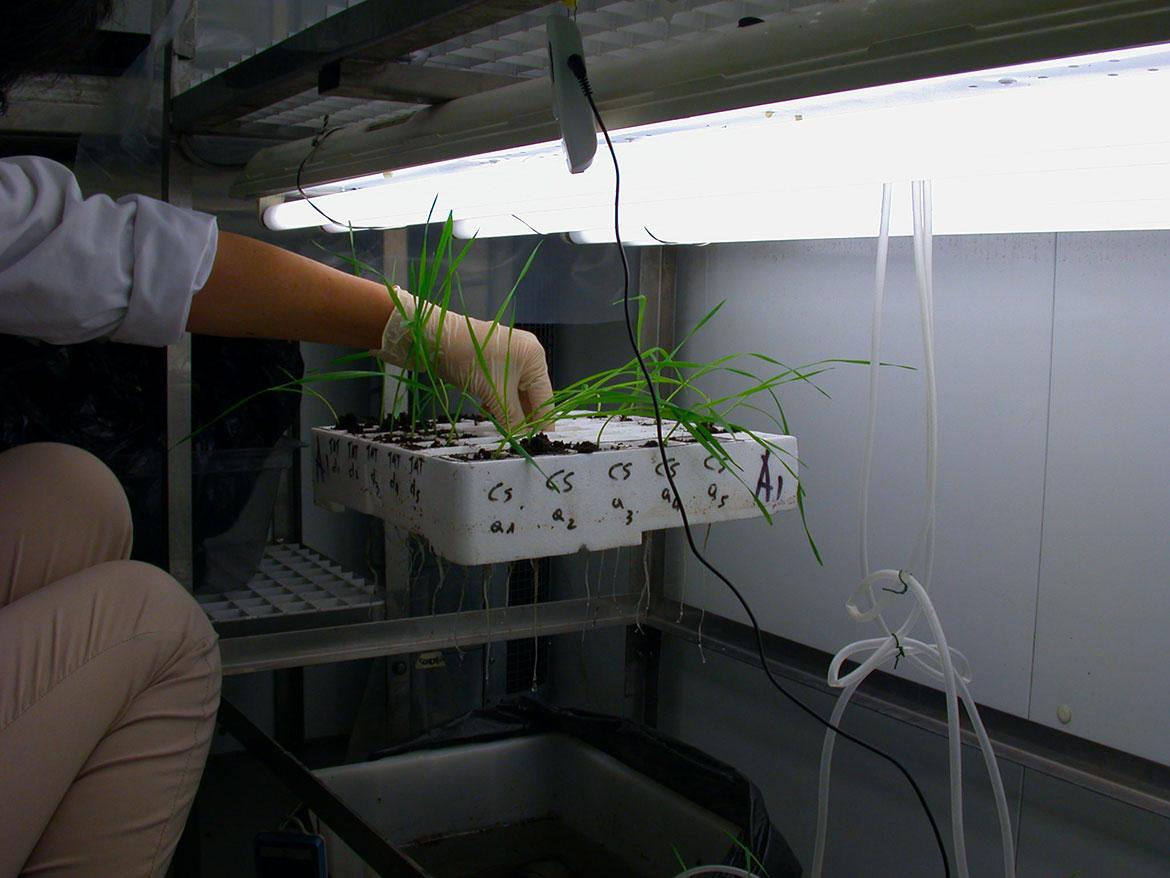Italian National Agency for New Technologies, Energy and Sustainable Economic Development

Agriculture: Durum wheat, new varieties are being studied resistant to drought, high temperatures and soil salinity
Improving durum wheat’s ability to tolerate and adapt to environmental stresses is the goal of the project IMPRESA[1], funded by the Ministry of University and Research with over 700 thousand euro, which includes Italy (ENEA and Tuscia University as coordinator), Turkey (University of Harran), Algeria (University of Ferhat Abbas Sétif and Center de Recherche Scientifique et Technique sur les Régions Arides) and Tunisia (Center of Biotechnology of Sfax).
"Durum wheat is a food crop of strategic importance for Italy and for many countries bordering the Mediterranean. We are working with some of them to improve its resistance to environmental stresses like drought, high temperatures and soil salinity which, due to changing climate, are dramatically increasing, threatening crop production.
We are trying to widen durum wheat genetic basis -shrunk by a prolonged selection for more productive varieties under optimal conditions- by resorting to wild wheat relatives, which are a valuable source of tolerance genes to extreme environmental conditions, since they were not bred selectively by humans and naturally adapted to the surrounding environment ”, explained Debora Giorgi, ENEA researcher at the Biotechnology Laboratory and project manager for the Agency.
Thanks to non-GMO chromosomal engineering[2] strategies, project coordinator Carla Ceoloni of the University of Tuscia, has developed recombinant lines in which variable quantities of the genetic makeup of wild species tolerant to environmental stress were transferred, like the perennial Thinopyrum ponticum and Thinopyrum elongatum. These lines were made available to the international team which has already started testing them to select the most resilient.
"We have already started the first tests to evaluate the tolerance to drought, high temperatures and soil salinity of these new combinations of durum wheat and their wild relatives both in controlled conditions and in the field, in various pedo-climatic environments of the countries joining the project. This key phase will 'lead' us to the next one, in which to transfer the new adaptation characteristics to the varieties of durum wheat that better respond to the cultivation needs of different environments and end users, such as farmers and seed and processing companies ", pointed out the ENEA researcher.
In particular, the ENEA researchers are studying, under controlled conditions (greenhouses) and in the early stages of plant development, the response to salt stress of some recombinant lines of durum wheat / wild grasses, evaluating their growth both in terms of plant development and cell proliferation. "The results obtained so far are very positive: the presence of 'alien' genetic material, in particular from the wild species of the Thinopyrum genus, in the genome of durum wheat gives the plant an advantage, with statistically significant differences compared to the controls, in terms of tolerance to salinity and also to the other types of environmental stress considered by the project ”, explained Giorgi.
"In addition to developing new lines and future varieties of durum wheat - he continued - we are also trying to identify key factors like genes, proteins and metabolites, at the basis of the response of durum wheat and wild grasses to the different conditions of stress". To do this, ENEA has put in place original skills and techniques developed over the years to face the great challenge posed by the analysis of plant genomes, first of all that of common wheat, which has been one of the most difficult and largest to study. (it is about six times larger than the human one).
"We are using a technique [3] we have developed in our laboratories and already applied to complex plant species like soft wheat, oats and rye, which has allowed us to separate and isolate the single chromosomes containing the "alien" chromatin from the rest of the wheat genome, so as to identify in a more targeted way the presence of those genes and those DNA sequences that will enable us to develop resilient, eco-sustainable and efficient varieties in terms of available natural resources ”, pointed out Giorgi.
Today, the agricultural system as a whole is facing huge challenges: on the one hand the increase in food demand worldwide, on the other the consequences of the climate change underway, which contributes to reducing the availability of suitable environments for food production. In particular, the increase in temperatures, the scarcity of water resources, erosion and alteration of soils are emerging problems for Southern Italy and other countries of the Mediterranean basin. "In this scenario, a new paradigm for the genetic improvement of plant species is urgently needed and therefore, a new plant model or 'ideotype' for crops of agricultural interest. Not only. The project will encourage participatory approaches, enhancing local experiences in the conservation, use and management of plant genetic resources, for example testing genetic materials also in 'conservation agriculture' systems widespread in Algeria and Turkey and of growing interest for cereal operators in Southern Italy ”, she concluded.
Note
[1] IMPRESA (IMProving RESilience to Abiotic stresses in durum wheat) is part of PRIMA (Partnership for Research and Innovation in the Mediterranean Area).
[2] The chromosomal engineering behind this project combines traditional breeding methods based on natural crossing between two different species and the use of particular mutant lines for the Ph1 gene (pairing homoeologous), which controls pairing among chromosomes during the stages of pollen and egg cell production. This is necessary because, in grasses, the Ph1 gene allows pairing only between homologous chromosomes that belong to the same genome, while in mutant lines the possibility of pairing is also extended to homeologous chromosomes, i.e. corresponding but belonging to different genomes or species. In this way, in the crossing between mutant lines of durum wheat and wild species, the pairing of the wheat chromosomes with those belonging to wild grasses allows the exchange of portions of chromatin, that is of DNA and chromosomal proteins present in the cell nucleus among chromosomes of different species, with possible transfer of "alien" chromatin into the wheat genome.
[3] A further advance in the chromosomal approach was achieved thanks to the development of a technique called FISHIS (Fluorescent In Situ Hybridization In Suspension) which combines molecular cytogenetics and flow cytometric analysis, allowing a finer discrimination of single chromosomes.


